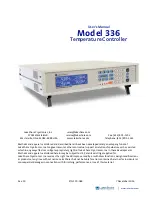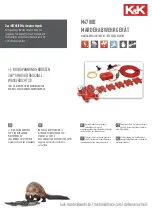
1
L
OGIC
TECHNOLOGIES
R
AIL
"Sophisticated
Model Railroad
Electronics"
TM
21175 Tomball Pkwy Phone: (281) 251-5813
Suite 287 email: [email protected]
Houston, TX 77070 http://www.logicrailtech.com
Block Animator/2
-
CC
Instructions
Use with 3-light and position light signals wired
with common cathode LEDs (covers versions
BA/2-CC, BA/2-CC-IR and BA/2-CC-X)
Revised 10/12/2020
Getting started
Thank you for purchasing a
Logic Rail Technologies
product! Please familiarize yourself with all the instructions prior to
installing this board. The
Block Animator/2
(versions BA/2-CC, BA/2-CC-IR, and BA/2-CC-X) provides 3-aspect signaling
for signals constructed with LEDs wired with a common cathode (3-light or position light). The signal outputs are capable of
providing ~175 mA per output.
The
Block Animator/2
provides automatic operation of two 3-aspect block signals in a semi-prototypical way. Four sensors
(photocells or infrared emitters and detectors) are used for bidirectional train detection; two are used for the Eastbound signal
and two are used for the Westbound signal. The typical layout of the signals and sensors is illustrated below.
Sensor
W1
Sensor
E1
Sensor
W2
Sensor
E2
Signal
EB
Signal
WB
W E
What is different from the original version of the
Block Animator (BAD-CC, BAD-CC-IR)
?
Signal outputs are turned on in sequence (Red
Yellow
Green), briefly, when power is first applied to the
board. This gives you a quick test of the signals to make sure all the connections are correct and the signals work!
The time delay between color changes is now adjustable from 1 to 127 seconds! You are no longer limited to
choosing between one of two delay times.
There are individual sensor status indicators on the circuit board. These not only help you when first setting up
the board but are also active when in “operating” mode.
The Flashing Yellow aspect has been added. When enabled the signal will transition from yellow to flashing
yellow before returning to green. This simulates an Approach Medium indication.
There is no need to swap chips on the board if you want to use a photocell, infrared between-the-rails, infrared
across-the-rails, and external detectors. However, you will need to decide which sensor type (photocell or
infrared), if any, you want at the time of purchase. Both sensor types are still available separately (#PCELL or
#BTR-IR4) if you want to change types!
The board is also offered without optical sensors (version BA/2-CC-X) for use with other brands of external
detectors.
The infrared detection method has been improved and no longer has strict limits on the incoming voltage.
NOTE:
the IR emitter wiring is different from the previous generation product!!! Please pay close attention to this.
We added another visual feature, Signal Fade, which fades individual aspects off and on when transitioning
between the indications (clear, stop, approach). This feature can be enabled or disabled on the board.
How does it work?
In the absence of any trains the two signals will be green. Now consider a train traveling eastbound. When sensor W1 is
activated signal WB will change from green to red and will remain red as the train continues eastbound and subsequently
activates sensor W2. When the train then activates sensor E2 signal EB will change from green to red. Once the train has
totally cleared sensors W1 and W2 signal WB will change from red back to green. As the train continues eastbound towards
sensor E1 signal EB will remain red. Once the train has passed over sensor E1 and totally clears both it and sensor E2 signal
EB will change to yellow; this mimics the behavior of the train entering the “next block.” After a time delay (adjustable; see
page 7) signal EB will change to green. Signal operation for a westbound train is similar with signal EB changing from green
to red and back to green while signal WB changes from green to red to yellow and back to green.


























